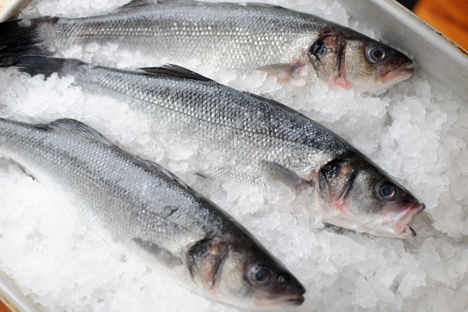
Cornish suppliers going the extra mile: Kernowsashimi
Supplying excellent quality fish requires meticulousness at every level, from how it’s caught to the postharvest care. That’s why many of Cornish supplier Kernowsashimi’s fishermen use a Japanese method known as ike-jime to kill certain fish. Henry Coldstream talks to Kernowsashimi’s Dylan Bean to find out more.
Cornish suppliers going the extra mile: Kernowsashimi
Supplying excellent quality fish requires meticulousness at every level, from how it’s caught to the postharvest care. That’s why many of Cornish supplier Kernowsashimi’s fishermen use a Japanese method known as ike-jime to kill certain fish. Henry Coldstream talks to Kernowsashimi’s Dylan Bean to find out more.
While much of the UK benefits from having wonderful produce, there aren’t many areas more renowned for it than Cornwall. It may have developed a reputation over the years for its meat thanks to suppliers such as Philip Warren and Matt Chatfield, but it’s still seafood that jumps to most people’s mind when they think of Cornish produce. The county’s thriving fishing industry has been central to its economy for centuries and still is to this day, with much of the fish used by the country’s top chefs coming from the South West coast. This means that Cornish fishermen and seafood suppliers are constantly looking for ways to make their fish stand out from the crowd to ensure that restaurants want to work with them.
One such supplier is Kernowsashimi, which is focused not only on supplying the highest quality fish to chefs, but also on providing local fishermen with an opportunity to sell their prized catches to the best restaurants in the UK. Founders Chris Bean and his son Dylan provide an alternative service for the small fishing boats based on Cornwall’s Lizard Peninsula, allowing the fishermen to sell their catch without a daily two-hour journey to the fish market at Newlyn Harbour. Instead, the fish is sold direct to Michelin-starred restaurants such as The Clove Club and Umu, allowing it to be delivered within twenty-four hours of being caught.
‘Most of the boats are small enough that they’re operated single-handedly,’ explains Dylan. ‘These boats only catch a small number of fish but they’re really spanking fresh because they’re only out for a short while. The fishermen use static lines which are kinder to the animal, and it means they’re not bruised or full of sand. Each fish is looked after individually as it comes aboard the boat.’
The fish caught by Kernowsashimi’s fishermen are already incredibly high quality, but there’s a lot of emphasis also placed on postharvest care in order to preserve their texture, flavour and appearance. This includes some of the fishermen using Japanese methods called ike-jime and shinkei-jime to kill the fish once they’re on the boats. ‘These methods are species-specific’, explains Dylan. ‘They’re predominantly used on sea bass and gilthead breams and can also only be applied when the fish has been line-caught. Ike-jime means ‘brain kill’, so you’re literally killing the brain of the fish to stop it releasing the neurotransmitters that start the decaying process and cause the fish to lose its flavour. You can do this by just cutting the head off but that makes the fish look horrible, so you use a metal spike instead. Shinkei-jime is the next level, where you actually remove the spinal cord from the body of the fish to stop the decaying process even more thoroughly. This is done by poking a wire down the cavity of the spinal cord.’
These methods sound pretty medieval, but they’re actually very humane as it means the fish are killed instantly. The techniques can’t simply be used on any fish to improve its quality, however, as Dylan explains: ‘The quality of the fish already needs to be at a very high level before you even start thinking about ike-jime. If you catch a fish correctly, ice it correctly, and gut and bleed it properly, that’s ninety-five percent of the postharvest care dealt with. If you ike-jime it, you’re maybe adding four percent to the quality, and if you want to shinkei-jime it as well, that’s adding maybe one percent.’ These are minor improvements to the quality of the fish given the skill and time needed to utilise these methods, but Kernowsashimi’s dedication to the practice is what sets the company apart from other suppliers. It’s also why Kernowsashimi’s name appears on the menus of many of the best restaurants in the country.
But how did these Cornish fishermen come to know about the Japanese methods? It was actually a former chef at Umu called Yoshinori Ishii who came down to Cornwall to teach them. ‘When Yoshi joined Umu ten years ago, he was so demoralized with the standard of fish he was receiving,’ says Dylan. ‘So he went on a bit of a campaign around the country to try and persuade fishermen to look after fish better. He came down here and realised that we were providing excellent quality fish already, and not long after he was receiving fish from us five days a week. Over the years, he then went out on most of the boats to teach the fishermen everything he knew about the ike-jime and shinkei-jime methods.’
Kernowsashimi is a supplier that truly goes above and beyond to make sure that its product is of exceptional quality. What’s more, it provides Cornish fishermen with the opportunity to have their catches featured on the most prestigious menus in the country, teaching them new skills in the process.


